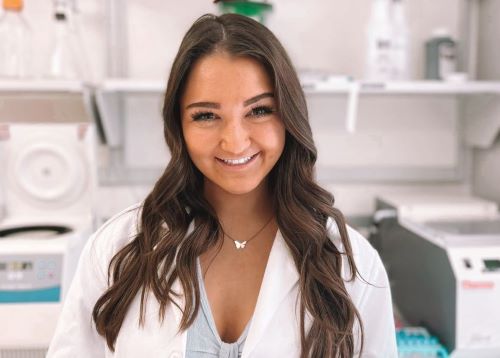Toenail Clippings Of Farmers Needed For Chemical Exposure Research

Iowa farmers, get out your toenail clippers! Anna Proctor, a University of Iowa (UI) Ph.D. student, is collecting samples for a study she will conduct later this year using Iowa farmers’ toenails.
Proctor says the nail clippings will help assess farmers’ exposure to arsenic, pesticides and other chemicals.
“I’m trying to see what kinds of chemicals have built up in farmers’ bodies as a result of them doing their job. Farming is a super diverse occupation and there’s a lot of occupational demands that may change daily,” Proctor says. “This can result in a lot of exposures to multiple contamination sources, and these contaminates can be stored in the body.”
Essentially, Proctor wants to take an inventory of pollutants found in farmer’s bodies, using toenails as a biomarker.
Why toenails? Toenails can provide a 6- to 9-month record of a person’s exposure to the contaminants. They’re also easier to collect, handle and store than blood or urine, the typical samples used to determine environmental exposure.
“Toenails are a great noninvasive biomarker,” Proctor explains. “They measure long-term exposure rather than acute. They are stable so they’re easy to transport and store. They aren’t biohazardous material.”
Not to mention, cutting toenails is something most people do and it doesn’t require any medical expertise, she adds.
Why Farmers?
This project was created because Proctor wants to focus her career on improving the health of farmers.
“If the results of my dissertation show us what farmers in Iowa are being exposed to, we can better understand how to protect against those exposures,” she says. “To go about doing that, you need to know what the specific contaminates being built up are so you can have tailored remediation approaches to mitigate exposures to chemicals that are believed to be health hazards.”
In addition to Iowa being the nation's top producer of corn, hogs and eggs, some parts of the state, in particular the north central region, have high levels of naturally occurring arsenic in groundwater that may be tapped for drinking water, researchers explain in an Iowa City Press-Citizen article. Highly toxic, arsenic has been tied to prostate and other cancers as well as to conditions like diabetes, cardiovascular disease and neurological disorders.
Although this research is starting in Iowa, Proctor believes it can be expanded.
“I want the work I’m doing now in Iowa to eventually be used on a larger scale. Since different states have different types of agricultural practices and production, I think it could be interesting to see how farmers’ contaminant profiles across the U.S. compare with each other,” she says. “However, I think it’s important to start small and prove that you have effective scientific methods before expanding to something larger.”
Proctor, who most recently worked inside Iowa hog confinements for her master’s thesis, hopes this research will provide Iowa farmers with information that could help them better protect their health.

Anna Proctor says this is an easy study to participate in. Photo provided by Anna Proctor.
“I come from a family of farmers and ranchers and I take this work really seriously,” Proctor says. “Farmers are typically not at the forefront of the country’s mind, which is unfortunate considering how much work and dedication goes into food production.”
She genuinely hopes the work she produces will provide a launch point to identify further areas of research to better protect and promote farmers’ health.
“I want farmers to know that agricultural research efforts are alive and well and researchers respect and want to protect farmers, agricultural workers and members of the food production system,” Proctor adds.
Clipping Toenails Is Easy
Farmers are busy and it’s hard to pull them away from the farm. That’s one of the reasons why toenail clippings are a great way to look at exposure to chemicals.
“You don't need to be a medical professional to cut your toenails,” Proctor says.
Information gathered will be pooled so individuals’ identity will be protected. Proctor expects the study to take about a year and she plans to provide participants with an overview of the results.
In the study's next phase, a more targeted group of farmer participants would be recruited to gather more details about their health, lifestyle, farming practices and livestock production.
That work, which isn't expected to begin for another year or more, could begin to provide answers about farmers’ risk for disease.
How to Join In
Iowa farmers interested in participating in the study should email Anna Proctor at arproctor@uiowa.edu and she will provide a kit that includes a clipper, bag for returning the nail clippings, and a short questionnaire. Proctor expects it will take about 10 minutes for farmers to provide the sample.
Read More:
Iowa State Football Players Go Viral in 'Purchase Moore Hamann Bacon' Campaign
Is Prop 12 to Blame for California's High Prices and Low Sales of Fresh Pork in August?
Rural Revival: Why 3 Pig Farmers’ Wives Quit Teaching and Bought a Coffee Truck







